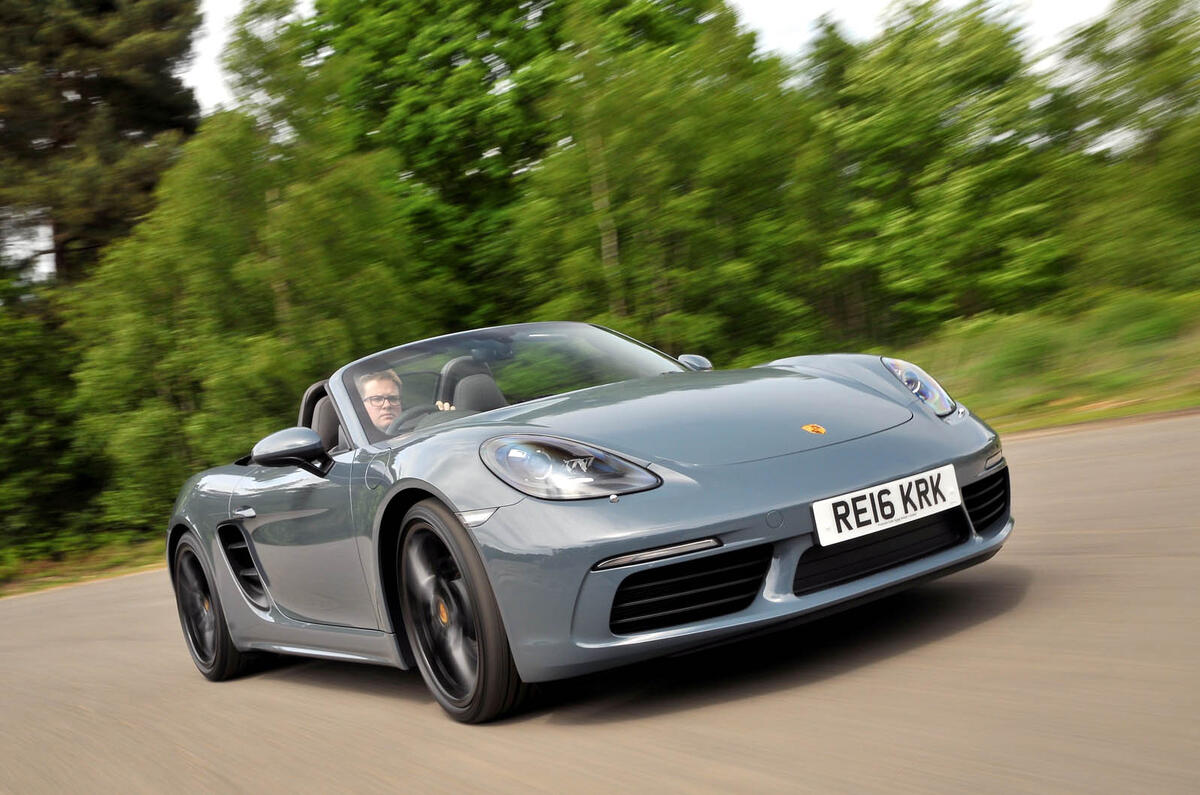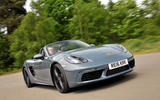Thwarted in the engine bay, Porsche saves its traditional incremental enhancement for the Boxster’s marvellous handling compromise.
Four years ago, we said the car’s sporting brio was so effortless that it almost qualified as uncanny.
It is possible now to be even less equivocal: with the optional PASM system (£971) and mechanical locking rear diff (£890) fitted, the Boxster combines transparent sporting pedigree with the kind of wonderfully tied-down comfort levels that make the model not only endlessly absorbing but also inexhaustibly good company. Fundamentally, of course, the temperament has not changed.
The Boxster still makes a palpable virtue of its mid-engine balance, still changes direction very sweetly and still provides a volume manufacturer benchmark for how a two-seat sports car ought to feel once you’ve removed the roof.
The chief differences between the 718 and its predecessor are the breadth and depth of its adaptive ride quality and the prescribed sharpening of its chassis.
Polishing both seems counter-intuitive, but Porsche’s engineers have done their job at the margins with typical effectiveness.
In the PASM’s most forgiving mode, the Boxster makes short work of even the most ramshackle UK road. The stated loss of 10mm of spring travel barely seems credible when the wheel control (even with 20in Carrera S wheels shoehorned under every corner) is so consistently supple.


















































